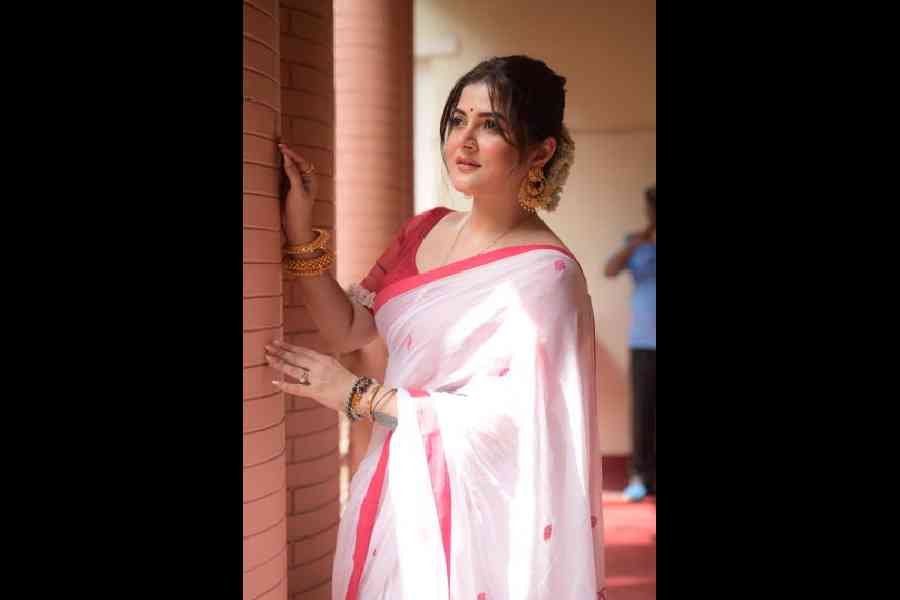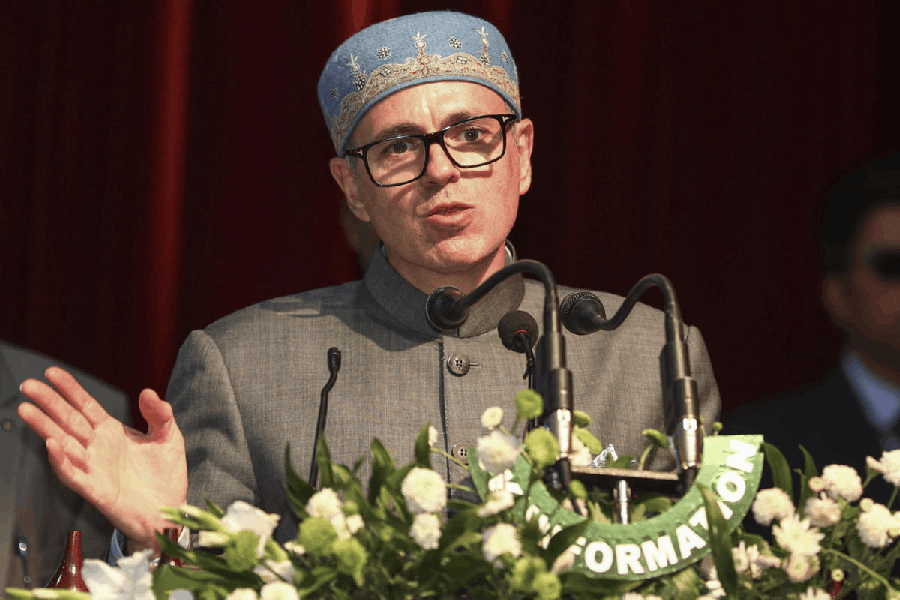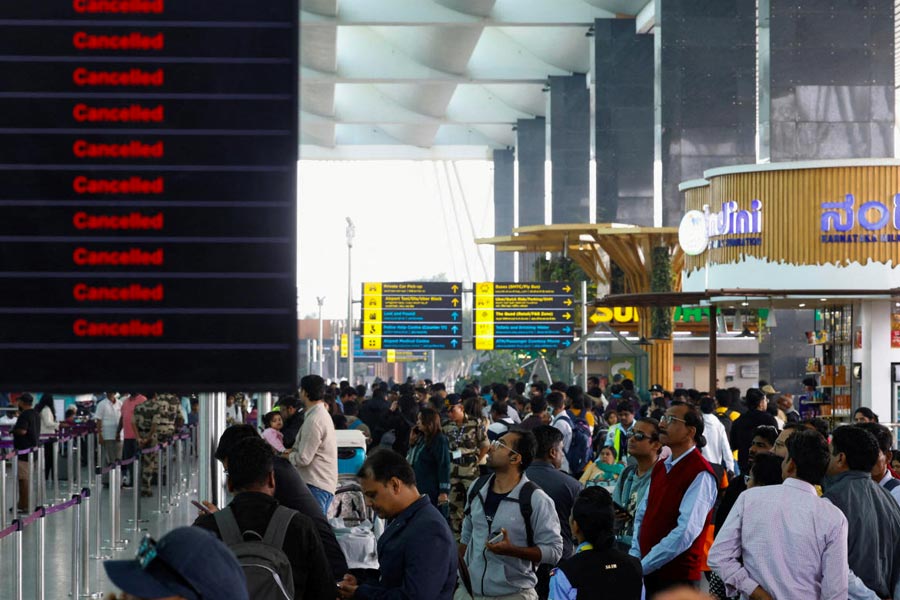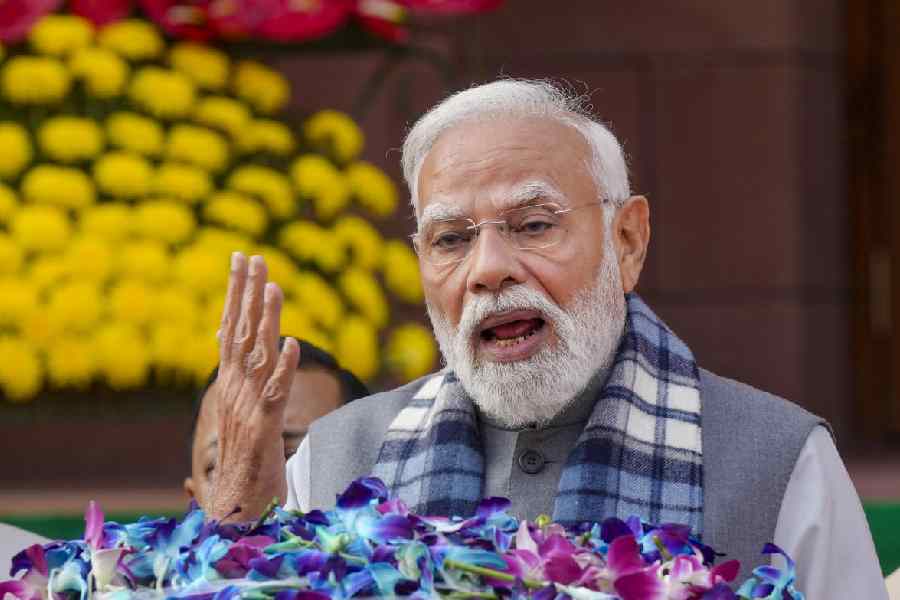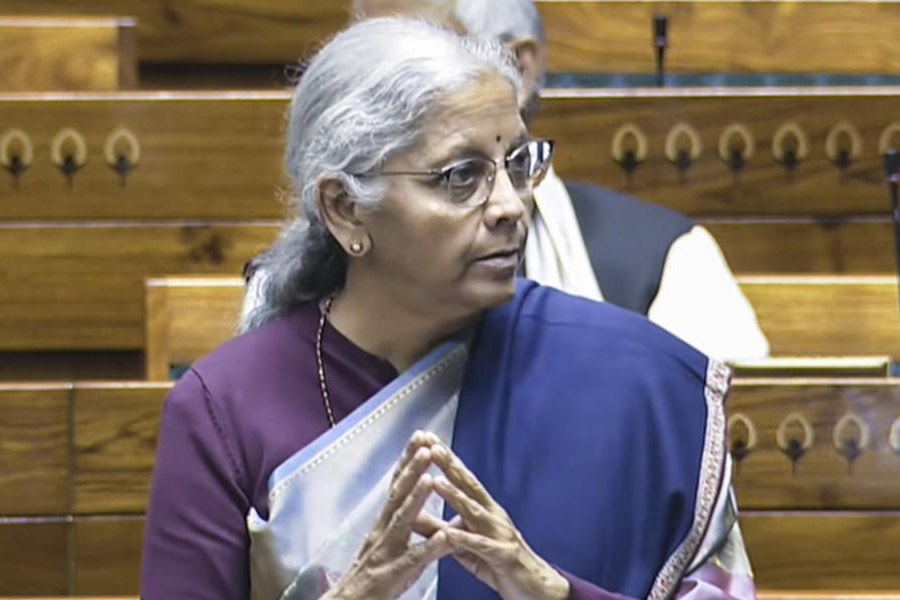On a warm morning, a quiet convoy began to assemble near the airport. The cast and crew of the upcoming period drama Devi Chowdhurani — Prosenjit Chatterjee, Srabanti Chatterjee, Bibriti Chatterjee, Darshana Banik, and director Subhrajit Mitra — gathered at a hotel tucked behind the busy lanes near Dum Dum. Saris were pleated to perfection, kurtas freshly ironed, and make-up was light but camera-ready. The mood was contemplative but hopeful — after all, this wasn’t just a press event. This was a pilgrimage of sorts.
As the group exchanged pleasantries over cups of chai and final costume checks, a police pilot vehicle pulled up outside the portico. That was the cue. Engines roared to life and the convoy — a trail of white SUVs and dark-tinted sedans — rolled out, flanked by cop cars.
The occasion was symbolic: it was the birth anniversary of Bankim Chandra Chattopadhyay, novelist, poet, and one of Bengal’s most influential literary figures. And it was at his ancestral home in Naihati that the cast of Devi Chowdhurani, based on his celebrated novel, would officially begin the film’s promotional journey.
Devi Chowdhurani, originally written by Bankim Chandra Chattopadhyay in 1884, is a revolutionary tale that blends patriotism, feminism, and spirituality. Set against the backdrop of British colonial rule, the novel tells the story of Prafullamukhi, an abandoned and wronged woman who transforms into Devi Chowdhurani — a fearless dacoit queen who leads an underground resistance against oppressive rulers. Through her journey from victimhood to power, Bankim not only critiques societal injustices but also reimagines the role of women in freedom struggles. The story is rich in its portrayal of devotion, strategy, sacrifice and the fluid lines between dharma and rebellion. In many ways, Devi Chowdhurani was ahead of its time, offering a female protagonist who is complex, political, and spiritually profound, all at once. The novel continues to inspire reinterpretations, especially at a time when conversations around women’s agency and historical reclamation are more relevant than ever.
The transition from city to suburb was slow but cinematic. As the cars cruised in a line through the outskirts, the roads began to narrow, the air changed texture, and curious onlookers began to appear by the roadside. By the time the convoy entered Naihati, whispers had turned into excited murmurs. “Bumbada aschhe” — he’s coming. The town, already aware of the date’s significance, now hummed with the collective certainty that something momentous was about to happen.
“Every year on this day, celebrities come here,” said a local man, crouched beside the entrance. “Locals know this by now. I work here every year on this day — arranging food, helping with the set-up.”
As the cars pulled up outside the gates of Bankim Chandra Chattopadhyay’s Residence and Museum, the street was already lined with hundreds of people. Fairy lights draped the building like an embroidered shawl. A shamiana had been set up in front of the house, and loudspeakers gently crackled with announcements. The crowd — schoolchildren on shoulders, elderly couples, street vendors with chai flasks — jostled for position. Phones were out. Some prayed for a selfie; others just wanted a glimpse.
Bankim Chandra’s house, now a designated heritage property, is part museum, part living memory. Located in the quiet neighbourhood of Kanthalpara in North 24 Parganas, it was converted into a public museum in the 1950s, though only a portion of the sprawling ancestral estate is currently accessible.
The structure is unassuming from the outside — two storeys, lime-washed walls tinged with time, and arched wooden doors — but within, it’s a world preserved in reverence. The facade is simple yet graceful, marked by wide verandas on both floors, supported by slender apricot-washed pillars that create long shadows in the afternoon sun. The exterior, in soft tones of cream or faded white, is punctuated by green shuttered windows and teakwood doors. Once you step inside, the building opens up into a series of high-ceilinged rooms, each with its own character.
There are rooms still bearing original teakwood furniture, cabinets filled with yellowing letters, and ageing first editions of Anandamath and Bangadarshan. One room is dedicated solely to Vande Mataram, the national song Bankim Chandra composed within these very walls. Another, his modest bedroom, is marked by restraint and silence. Most rooms require visitors to remove their footwear before entering — a small ritual of respect that adds to the atmosphere.
Red oxide flooring, old ceiling fans, wooden almirahs and framed portraits give the home a timeless texture. There’s an inner courtyard, typical of many Bengali homes of the 19th century, which likely served as a space for rituals and daily life. Today, only a portion of the house is open to visitors, but even that part carries the layered scent of history — of ink, dust, reverence, and revolution. The back gate opens directly to the railway lines near Naihati station — a surreal reminder of how history and the everyday still brush shoulders here.
The corridors are lined with framed photographs and charcoal sketches — portraits of Bankim, his contemporaries, and several icons of the Bengali renaissance. They once sat in these rooms, debated ideas, shared stories, and watched the dawn of Indian nationalism take shape.
“Various icons like Ishwar Chandra Vidyasagar have visited this house,” one of the staff members said, pointing to a wall of sepia-tinted photos. “Their presence still lingers here.”
Despite the tight security cordon, a few eager locals managed to slip through and stood right by the edge of the stage set up for the stars. Some held up their phones on group video calls — waving frantically, turning their screens to the stage — while others took selfies with the building in the background. There was a sense of shared joy, of collective celebration, and an unspoken pride that a story born in Naihati was now returning in cinematic form.
And it helped that the day looked as elegant as it felt. Bibriti looked ethereal in a soft white organza sari, her minimal look exuding quiet grace. Darshana Banik wore a striking blue dhakai sari, accessorised with classic pearls, while Srabanti turned heads in a traditional red-and-white sari paired with gold jewellery that gleamed in the morning light. And Bumbada — the ever-effortless actor — was dressed in a white kurta-pyjama layered with a rust and olive-toned handwoven vest that added both texture and gravitas. Their ensembles, steeped in tradition yet styled with restraint, mirrored the spirit of the film they were there to honour.
Inside, the tone shifted once the celebrities moved towards the first floor and the locals cleared up. Time stood still.
The two-storeyed home has been lovingly curated — each room a window into Bankim Chandra’s world. His bedroom, quiet and sparse, with glimpses of the man behind the legend; glass cabinets filled with handwritten letters, vintage furniture, and rare first editions. Bookshelves form an intrinsic part of the museum, lined with rare first editions and important works — not only by Bankim Chandra Chattopadhyay himself, but also by his family members and prominent contemporaries of the Bengal Renaissance. The actors and other attendees were spotted barefoot in many of these rooms — a mark of reverence as much as preservation.
The team paid their respects with garlands and a moment of silence. Prosenjit paused at the cabinet that held the first editions of Bangadarshan and Anandamath, scanning the yellowed pages.
“Standing inside Bankim babu’s home today felt incredibly humbling — not just as an actor, but as a Bengali. I’ve had the fortune of playing many memorable characters over my career, but Bhavani Pathak is different. He is not just a revolutionary from literature — he represents a kind of spiritual and ideological courage that we don’t often get to portray. He believed deeply in the power of resistance, but also in the grace of devotion. As someone who is a fierce devotee of Goddess Kali, Bhavani’s inner world is charged with purpose and emotion, and I wanted to approach that with complete sincerity. That’s why visiting the Boro Ma Kali Temple today was not symbolic — it was essential.
“And then, to stand in the literary legend’s home — to walk through the study, to look at the first edition of Anandamath, to breathe in the same air where those words were once written — that’s not just research, that’s something else altogether. It is very emotional. Reminds you that these aren’t just stories. They are the foundation of who we are. For a film like this, the responsibility is greater — not just to perform, but to protect and pass on that legacy. I’ve always believed that cinema has the power to reawaken culture, especially for a younger generation that may not be reading these texts anymore. As an actor, you crave stories that transform you, and this one has,” said Prosenjit.
The film’s soul, it seemed, had come home. “It felt important to begin here,” said director Subhrajit Mitra, looking around the corridors where the spirit of rebellion and renaissance once breathed. “Bankim’s house is not just brick and mortar — it’s the soul of this story.”
Srabanti, who plays the titular role, looked visibly moved. “This house holds energy — you can feel it,” she said, adjusting the pallu of her sari. “We aren’t just adapting a novel. We are paying homage to a legacy. When I first read Devi Chowdhurani, I felt a surge of emotion — not just because she’s a strong woman, but because of how layered and radical her character is for the time. She’s fierce, she’s vulnerable, and she stands for something larger than herself. Shooting this film has been a journey of self-discovery for me. My grandfather was a freedom fighter, so from childhood, we were raised with stories of resistance, and I’ve grown up reading the works of Bankim Chandra Chattopadhyay. His words weren’t just literature for us — they were a way of understanding identity, pride, and courage. Coming to his house today, standing in the room where Vande Mataram was composed, made it all very real. It’s not just a period film — it’s a mirror to where we come from and what we carry forward. I hope women watching this feel empowered, the way I did while portraying her.”
Bibriti and Darshana strolled through the rooms, occasionally leaning in to read faded labels or admire aged calligraphy. There was a collective hush — the kind that often follows reverence.
“I think what makes Devi Chowdhurani special is how timeless it feels despite being set in a different era. The themes — courage, devotion, betrayal, love — they all still speak to us today. I chose this look — the blue dhakai and pearls — very intentionally. I’ve wanted to embrace something this classic and rooted for a while, and this moment felt right. Devi Chowdhurani is very special to me not only because of the story but because it gave me the chance to share screen space with Bumbada — something I’ve had on my bucket list for years. Being a part of this ensemble has been creatively fulfilling. And today, walking through the rooms of Bankim Chandra’s home, seeing his manuscripts, the portraits on the walls… it grounded me in a way few experiences have. This isn’t just a film; it’s a living, breathing homage to our roots. And I’m incredibly proud to be part of it,” said Darshana.
“This is the kind of film that challenges you emotionally and intellectually. Devi Chowdhurani is not just a story of revolution — it’s a story of women finding agency in a world that tries to contain them. Being here at Bankim Chandra’s house was surreal — it felt like the walls still whispered the pages of his novels. I’ve grown up reading these texts, but to now embody a part of that legacy onscreen — it’s honestly overwhelming. These are stories that shaped our cultural identity, and we must revisit them with honesty and heart,” said Bibriti.
What truly made the morning unforgettable, however, was not just the pageantry or the celebrity — it was the people. As the sun climbed higher, hundreds had gathered around the modest home-turned-museum, their eyes scanning every corner of the house and every passing car, hoping to catch a glimpse of Bumbada or Srabanti. A woman in her 60s whispered to us, “Bankim Chandra is our pride, and Bumbada is our present. Seeing them meet like this, even symbolically, feels like history coming full circle.”
And in a way, it did. The meeting of past and present wasn’t just ceremonial — it was visceral. Bankim’s legacy, deeply etched into the cultural consciousness of Bengal, suddenly felt accessible again. Not just through yellowed manuscripts or musty shelves, but through the living bodies of actors, the rhythm of film, the swelling score of modern storytelling. There was also the unmissable theatricality of the moment — in the best way possible. The interplay of colour and light, the slow hum of devotional music playing over loudspeakers in the temple across Bankim Chandra’s residence, the scent of incense and rajanigandha flowers mingling with monsoon air, lined standees and posters of the late novelist along with the eclectic troupe of actors— it all felt like a prologue to something larger.
After the homage at Bankim Chandra’s home, the team made a short but significant detour — a 10-minute drive to the revered Boro Ma Kali Temple. The stop was no coincidence. In Devi Chowdhurani, Prosenjit plays the role of Bhavani Pathak, a revolutionary and a staunch devotee of Goddess Kali. This symbolic visit, woven into the day’s events, added spiritual weight to the cinematic moment.
Word had already reached the locals near the temple that the stars were on their way, and by the time the cars arrived, the narrow road was lined with people waiting for a glimpse of the actors. The entrance to the temple swelled with devotees, selfie-takers, and neighbourhood aunties clutching puja thalis, hoping for a shared frame with Prosenjit or Srabanti.
And there it was again — that unmistakable blend of reverence and delight, where religion, fandom, and pop culture overlap in the most uniquely Bengali of ways.
The visit was not just a tribute; it was a statement — that this story, born from the pen of one of Bengal’s literary titans, was returning to the mainstream through cinema. And it began, fittingly, in the very home where the words were first imagined, and under the watchful gaze of a Goddess whose power still pulses through the story.
As chants of “Bumbada” rose again from outside, Prosenjit stepped out and waved. The crowd erupted. Somewhere behind them, a whistle blew — a train chugging into Naihati station, almost brushing against history.

